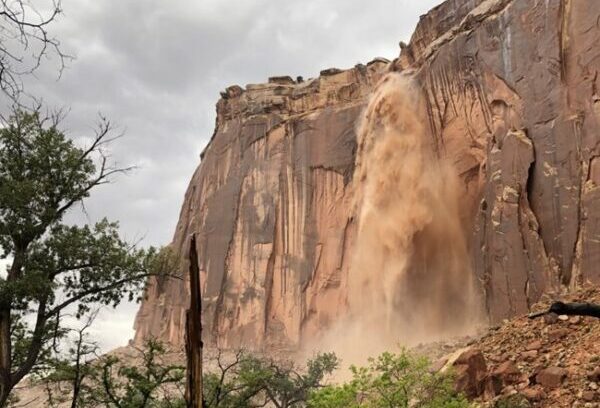With recent flash floods in the news, it is natural to wonder where flash floods come from, and if they are all that common in Capitol Reef National Park.
Last year Capitol Reef had a bad enough flood that it stranded approximately 60 people and made news everywhere. This year the floods have been more tame, but they did create massive dirty waterfalls and flash floods that one park ranger caught on camera here:
Where Flash Floods Come From, and How Common They Are
Flash floods can be common in monsoon season during June to September, and they can be especially dangerous in canyon country in Southern Utah.
According to a webpage from Capitol Reef National Park, “Less than one half inch of rainfall within an hour can cause a flash flood. Bare sandstone and scarce vegetation do little to soak up rain. Instead, muddy waterfalls cascade over the cliffs.”
Capitol Reef National Park, as well as Grand Staircase-Escalante National Monument regularly see dangerous flash floods that fill canyons and washes, flood rivers, and run over dry sandstone and roadtops.
How to Avoid Getting Caught in a Flash Flood
Flash floods can be really dangerous and scary, but luckily there are some pretty reliable ways to avoid their bad effects:
- Check for rain in the forecast before you go.
- Park only in designated areas and not along roadsides or at the bottom of canyons.
- Avoid hiking and driving in canyons, gorges, and washes when there are dark clouds above.
- Pay attention to brown, dirty streams and normally dry washes filled with water.
– The Byway
Feature image caption: A flash flood in Capitol Reef National Park creates a brown waterfall off the sandstone cliff. July 23, 2020. Courtesy National Park Service.

